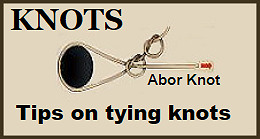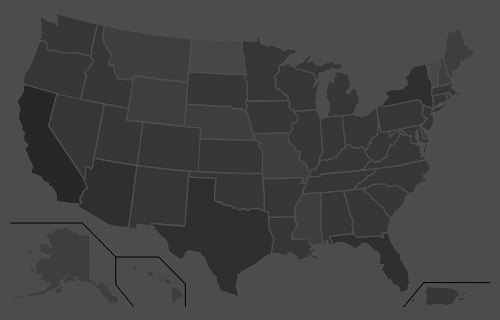“Our added winter moisture and active calling period led to a very long nesting and hatching season, starting in late April and extending into early summer, with chicks hatching as late as early July,” O’Dell said. “From a population standpoint, we are out of a deficit for the first time since 2001-2002. Quail are starting to pop up in places they haven’t been seen in a while.
“If you’ve never had the chance to experience what Arizona quail hunting built its name on, then this would be the year to get out and enjoy it.”
Meanwhile, hunters should note that the season for Mearns’ quail doesn’t begin until Dec. 4. It’s summer rainfall that plays a key role in nesting success and population numbers of this species. After a spotty and relatively weak monsoon across southern Arizona, these birds are likely to be abundant only in pockets that received sufficient precipitation this summer.
A valid Arizona hunting or combination hunt and fish license is required for all hunters 10 and older. Those hunters under 10 must either have a valid hunting or combination hunt and fish license, or be accompanied by an adult who possesses a valid hunting or combination hunt and fish license. Licenses can be purchased online or at license dealers statewide. A youth combination hunt and fish license (ages 10 to 17) is $5.
The general bag limit is 15 quail per day in the aggregate, of which no more than eight may be Mearns’ quail (when the Mearns’ season opens Dec. 4). The general possession limit is 45 quail in the aggregate after opening day, of which no more than 15 Gambel’s, scaled or California quail in the aggregate may be taken in any one day. After the opening of the Mearns’ season, the 45-quail possession limit may include 24 Mearns’ quail, of which no more than eight may be taken in any one day.
More quail-hunting information can be found on the department’s website at https://www.azgfd.com/Hunting/. Another resource for both new and experienced hunters alike is “An Introduction to Hunting Arizona’s Small Game.” Written by Randall D. Babb, the 196-page, full-color book covers where and how to hunt small game birds (like quail), squirrels, rabbits, ducks and geese. It also includes how to prepare and cook your harvest, with illustrations and recipes. The book can be ordered for $16.95 at www.azgfd.gov/publications.
Finally, hunters should check out O’Dell’s techniques for field-dressing quail at https://www.youtube.com/watch?v=3gRwZAcWzzk.
####
Publishers Notes: OUT OF STATE HUNTERS, FISHERMEN & OUTDOOR ENTHUSIASTS; Due to the Covid 19 pandemic, there could be limitations for OUT of STATE hunters, fishermen and other outdoor enthusiasts to include a 14-day quarantine requirement or negative COVID-19 testing alternative. Please check with the State's Department of Natural Resources BEFORE you travel or apply for the 2020 Fall Hunts.
Disclaimer: The views expressed on this site are that of the authors and not necessarily that of TBC Press
Minnesota Sets One-fish Walleye Limit on Mille Lacs Lake for Spring, Fall fishing
Submitted by: TBC Press
Posted on: 04/12/22
The Backcountry Press
The country's premier daily HUNTING, FISHING & OUTDOOR news in the USA and around the globe. Read whats happening in your neck of the woods & beyond.
© 2020 TBC Press - All Rights Reserved Website Design by:
News # 14749
“Our goal for Mille Lacs fishing regulations now and in the future is to offer fishing opportunities while also maintaining the long-term sustainability of the lake’s fish populations,” Parsons said.
After opening weekend (when fishing is allowed 24 hours a day) fishing hours on Mille Lacs Lake will be 6 a.m. to 10 p.m. for all species. Beginning Saturday, June 4, muskellunge and northern pike anglers using artificial lures or sucker minnows longer than 8 inches can fish after 10 p.m.
Walleye fishing will be catch-and-release from Wednesday, June 1 through Thursday, June 30. A two-week closure – implemented to reduce hooking mortality — will be in place from Friday, July 1 through Friday, July 15. Catch-and-release walleye fishing will resume on Saturday, July 16 and continue through Wednesday, Aug. 31.
The one-fish walleye limit is scheduled to resume Thursday, Sept. 1 through Wednesday, Nov. 30. During this period, anglers may fish from 6 a.m. to midnight.
Season structure depends on many factors
“Our projections make me confident we’ll have fall harvest,” Parsons said. “But predicting fishing pressure, catch rates and weather involves some uncertainty, so we want people to recognize that the fall harvest will depend on how much of the state’s walleye harvest total remains as we approach September.”
The state and the eight Ojibwe bands that have treaty fishing rights have agreed that Mille Lacs Lake can sustain a total walleye harvest of up to 135,000 pounds in 2022, with state anglers harvesting up to 80,300 pounds and a maximum tribal harvest of 54,700 pounds.
“Factors can change so we’ll reassess the walleye population come fall,” Parsons said. “Fish in those year classes in question are important for replacing the current mature walleye that are lost to both fishing and natural mortality.”
Mille Lacs Lake has been in a state of change since the 1990s, when the water clarity started to improve. Since then, there has also been warmer water temperatures and the introduction of invasive species such as zebra mussel and spiny water flea.
“The changing lake conditions impact fish populations and we will continue to monitor the lake to determine how these changes will influence fishing opportunities in the future,” Parsons said.
This year’s winter walleye harvest was about 6,800 pounds, less than half of what was expected. Lower catch rates for anglers and poor ice conditions in the early season were responsible. That drop in winter walleye take gave the DNR more flexibility to implement less restrictive open water regulations for 2022.
Even with the drop in winter harvest, a two-week closure during what’s normally one of the hottest times of the summer is needed to remain within the state’s harvest total. As water temperature increases, so does hooking mortality — the tendency for fish to die after being caught and released. Protecting walleye during this vulnerable period can allow for many weeks of harvest during cooler times of the year.
Additional details
The northern pike population on Mille Lacs Lake is healthy and harvest of fish under 30 inches is encouraged for anglers looking for another option to bring home a meal of fish.
To help avoid incidental catch of walleye during the two-week closure in July, fishing for any species with certain kinds of bait will be restricted. Anglers targeting northern pike and muskellunge can use sucker minnows longer than 8 inches. But anglers targeting other fish may not use live, dead, preserved or parts of minnows, night crawlers, worms, leeches or crayfish.
More information about fishing regulations on Mille Lacs Lake, ongoing DNR management and research, citizen engagement and Mille Lacs area recreation opportunities is available on the DNR website at https://www.dnr.state.mn.us/millelacslake/index.html.
####
Minnesota anglers will have two potential opportunities for Mille Lacs Lake walleye harvest during the 2022 open water season.
A one-fish limit will allow Mille Lacs anglers to harvest one walleye 21-23 inches or one longer than 28 inches from Saturday, May 14 through Tuesday, May 31. After a summer of catch-and-release fishing with an early July closure to reduce hooking mortality, the one-fish limit is expected to return on Thursday, Sept. 1.
“We must continue to manage state harvest very carefully on Mille Lacs so we can provide as much angling opportunity as prudent while protecting the opportunities for the future,” said Brad Parsons, fisheries section manager for the Minnesota Department of Natural Resources. “Two recent year classes show below average numbers of walleye, which means we need to factor in that fewer fish than normal will mature into spawning adults during the next few years.”
While the drops in fall walleye catch rates for the 2018 and 2019 year classes aren’t as dramatic as previous levels that closed walleye harvest on Mille Lacs, they do signal that more conservative walleye harvest regulations may be needed in coming years.












